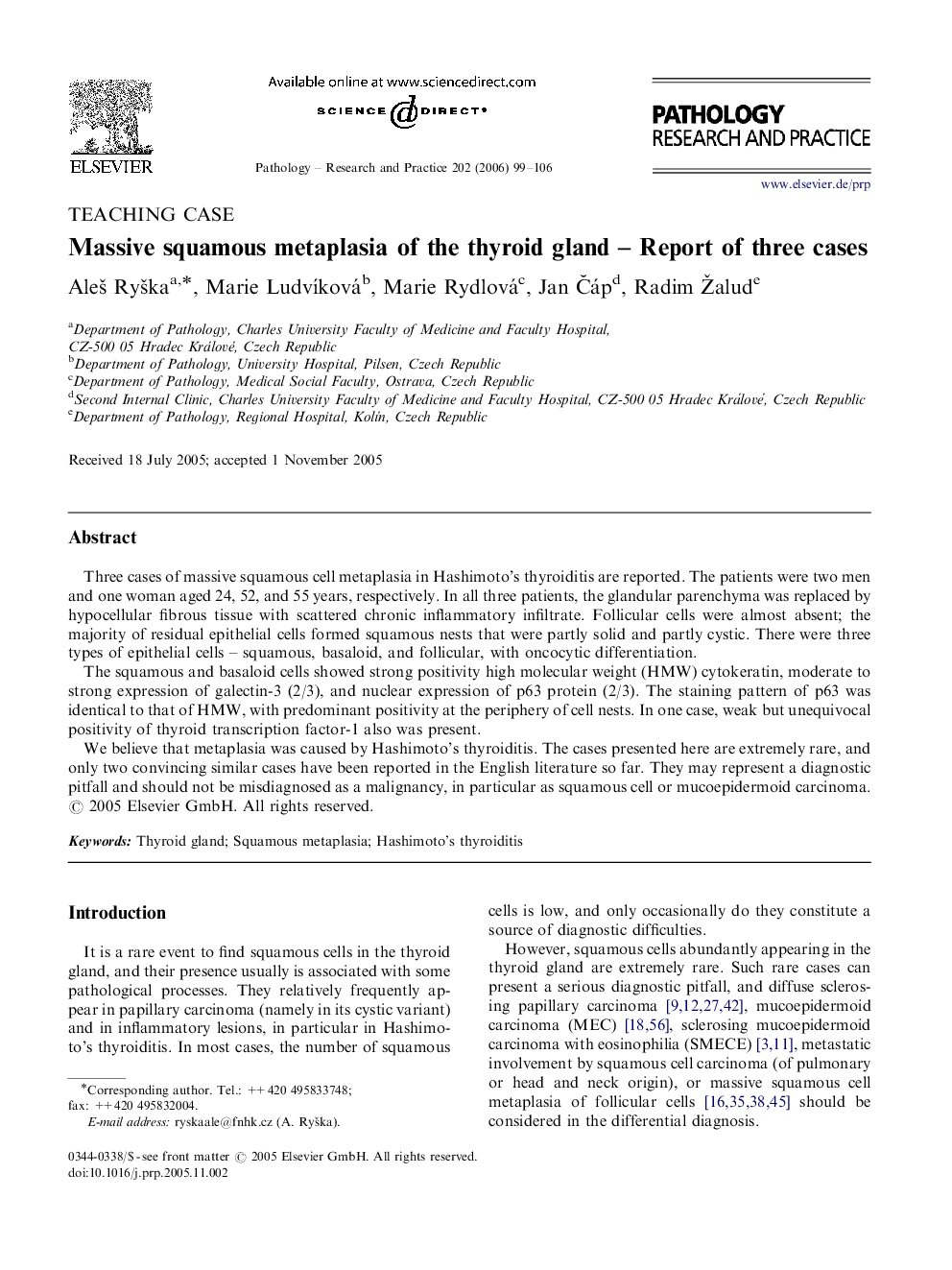| Article ID | Journal | Published Year | Pages | File Type |
|---|---|---|---|---|
| 2156774 | Pathology - Research and Practice | 2006 | 8 Pages |
Three cases of massive squamous cell metaplasia in Hashimoto's thyroiditis are reported. The patients were two men and one woman aged 24, 52, and 55 years, respectively. In all three patients, the glandular parenchyma was replaced by hypocellular fibrous tissue with scattered chronic inflammatory infiltrate. Follicular cells were almost absent; the majority of residual epithelial cells formed squamous nests that were partly solid and partly cystic. There were three types of epithelial cells – squamous, basaloid, and follicular, with oncocytic differentiation.The squamous and basaloid cells showed strong positivity high molecular weight (HMW) cytokeratin, moderate to strong expression of galectin-3 (2/3), and nuclear expression of p63 protein (2/3). The staining pattern of p63 was identical to that of HMW, with predominant positivity at the periphery of cell nests. In one case, weak but unequivocal positivity of thyroid transcription factor-1 also was present.We believe that metaplasia was caused by Hashimoto's thyroiditis. The cases presented here are extremely rare, and only two convincing similar cases have been reported in the English literature so far. They may represent a diagnostic pitfall and should not be misdiagnosed as a malignancy, in particular as squamous cell or mucoepidermoid carcinoma.
